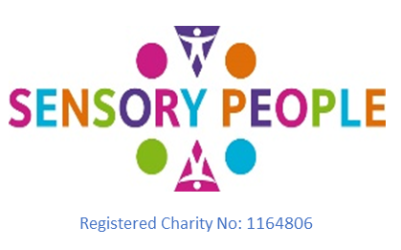a. Neural Foundations of Ayres Sensory Integration: Brain Sciences Journal, volume 9, issue 7, Lane, Mailloux et al
Sensory integration, now trademarked as Ayres Sensory Integration® or ASI, is based on principles of neuroscience and provides a framework for understanding the contributions of the sensory and motor foundations of human behaviour. The theory and practice of ASI continues to evolve as greater understanding of the neurobiology of human behaviour emerges.
In this paper the authors examine core constructs of ASI identified in the seminal work of Dr. Jean Ayres, and present current neuroscience research that underlies the main patterns of sensory integration function and dysfunction. They consider how current research verifies and clarifies Ayres’ propositions by describing functions of the vestibular, proprioceptive, and tactile sensory systems, and exploring their relationships to ocular, postural, bilateral integration, praxis, and sensory modulation. They close by proposing neuroplasticity as the mechanisms underlying change as a result of ASI intervention.
https://www.mdpi.com/2076-3425/9/7/153/htm
b. State of the Science of Sensory Integration Research With Children and Youth:
This article concludes that effectiveness research for interventions that address problems with processing and integrating sensations in children is improving in quality and rigor. Occupational therapy researchers are increasingly attending to the important issues articulated in this editorial. The articles in this special issue advance our understanding of the needs of children and young people with problems processing and integrating sensations. The systematic reviews provide evidence for effective interventions for this population and identify outcomes that can be examined in future research and addressed in clinical practice:
c. Examining the Neuroscience Evidence for Sensory Driven Neuroplasticity: Implications for Sensory-Based Occupational Therapy for Children and Adolescents; The American Journal of Occupational Therapy, 2019, 2019; Lane and Schaaf
When Ayres first presented the theory of sensory integration (SI), she grounded it in the neuroscience literature. Neuroplasticity was then, and is today, considered to be at the heart of this theory. This evidence based review sought to critically examine the basic science literature to specifically identify evidence for the assumptions and tenets of Ayres’ theory of SI. We reviewed literature between 1964 and 2005, within psychological, physiological, and biomedical areas, addressing neuroplasticity. The review focused on sensorimotor-based neuroplasticity; explored the data that addressed the links among sensory input, brain function, and behaviour; and evaluated its relevance in terms of supporting or refuting the theoretical premise of occupational therapy using an SI framework (OT/SI) to treatment. Although direct application from basic science to OT/SI is not feasible, we concluded that there was a basis for the assumptions of Ayes’ SI theory. This review provides direct and robust support for neuroplasticity in many brain regions in response to enriched conditions or direct sensory input, which can be enhanced during motor activity:
d. A systematic review of ayres sensory integration intervention for children with autism; Autism Research, vol 12, issue 1, 2019; Mailloux, May-Benson et al:
Ayres Sensory Integration intervention is one of the most frequently requested and highly utilized interventions in autism. This intervention has specific requirements for therapist qualifications and the process of therapy. This systematic review of studies providing Ayres Sensory Integration therapy to children with autism indicates that it is an evidence-based practice according to the criteria of the Council for Exceptional Children:
https://onlinelibrary.wiley.com/doi/full/10.1002/aur.2046
e. Ayres Theories of Autism and Sensory Integration Revisited: What Contemporary Neuroscience Has to Say; Brain Science 2019, vol 9; Kilroy, Aziz-Zadeh and Cirmak
This paper revisits Ayres’ primary postulates regarding sensory processing deficits in registration, modulation and motivation in individuals with ASD and examines them in light of current neuroscience research. To this end, the authors reviewed studies of sensory processing and sensory integration that used a variety of modern neuroimaging technologies and techniques to examine components related to sensory processing in ASD. Findings from these studies provide preliminary evidence to support Ayres’ postulates and expand upon her original theories of sensory processing in individuals with ASD.
https://www.ncbi.nlm.nih.gov/pmc/articles/PMC6468444/
f. Occupational Therapy for Speech and Language Disordered Children: A Sensory Integrative Approach:
The treatment of children with speech and language disorders is normally carried out by speech and language therapists but, due to the fact that they also present with a variety of perceptual-motor problems, an occupational therapist may be involved in their treatment. Recent research from the USA suggests that occupational therapy, using a sensory integrative (SI) approach, can have a direct, beneficial effect on speech and language development. In some cases, the child may initially benefit more from occupational therapy than from speech and language therapy. This article examines the theoretical implications of using an SI approach to treatment, with particular emphasis being given to vestibular stimulation. It is, primarily, intended to be a literature review in preparation for a research project currently being carried out by the author:
https://journals.sagepub.com/doi/10.1177/030802268705000404
g. Research Update: Sensory integration dysfunction affects efficacy of speech therapy on children with functional articulation disorders
This article concludes that speech and language therapy can improve the articulation performance of children who have functional articulation disorders whether or not they have sensory processing difficulties (SPD), but it results in significantly greater improvement in children without SPD. SPD may affect the treatment efficiency of speech therapy in young children with articulation disorders.
The article includes a lovely summary of evidence making links between sensory integration difficulties, motor co-ordination and articulation difficulties. A great article supporting possible links between motor praxis and oral praxis difficulties which we commonly see in clinical practice:
https://www.ncbi.nlm.nih.gov/pmc/articles/PMC3552545/
h. Study Finds ADHD Improves With Sensory Intervention
Preliminary findings from a study of children with attention deficit hyperactivity disorder (ADHD) show that sensory intervention — for example, deep pressure and strenuous exercise — can significantly improve problem behaviors such as restlessness, impulsivity and hyperactivity:
https://www.sciencedaily.com/releases/2005/05/050513103548.htm
